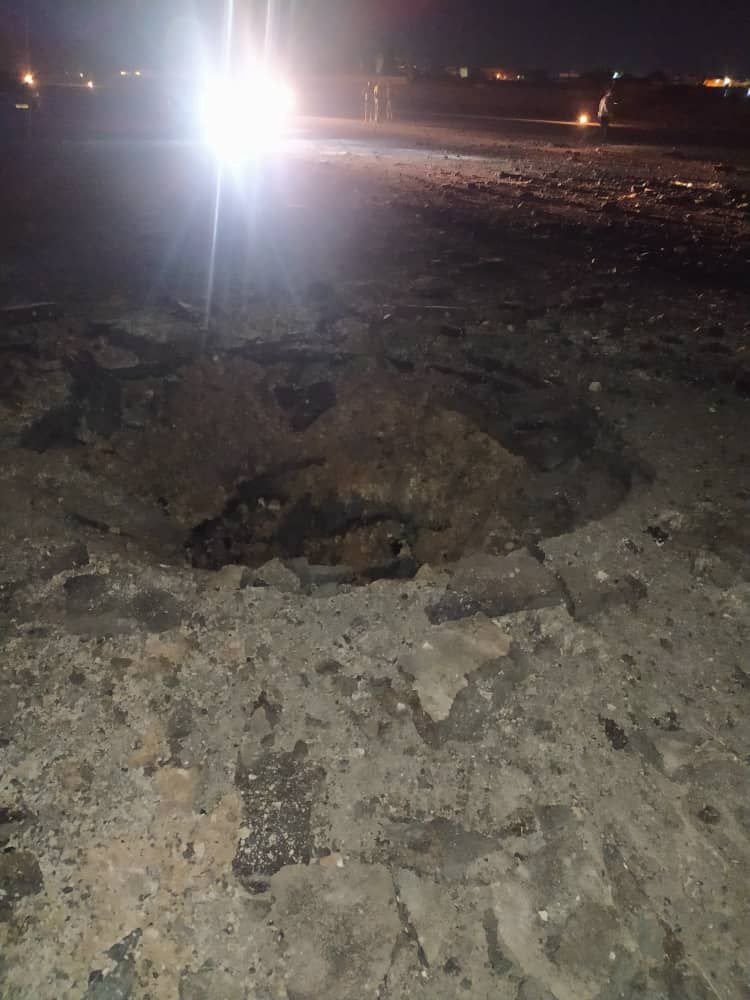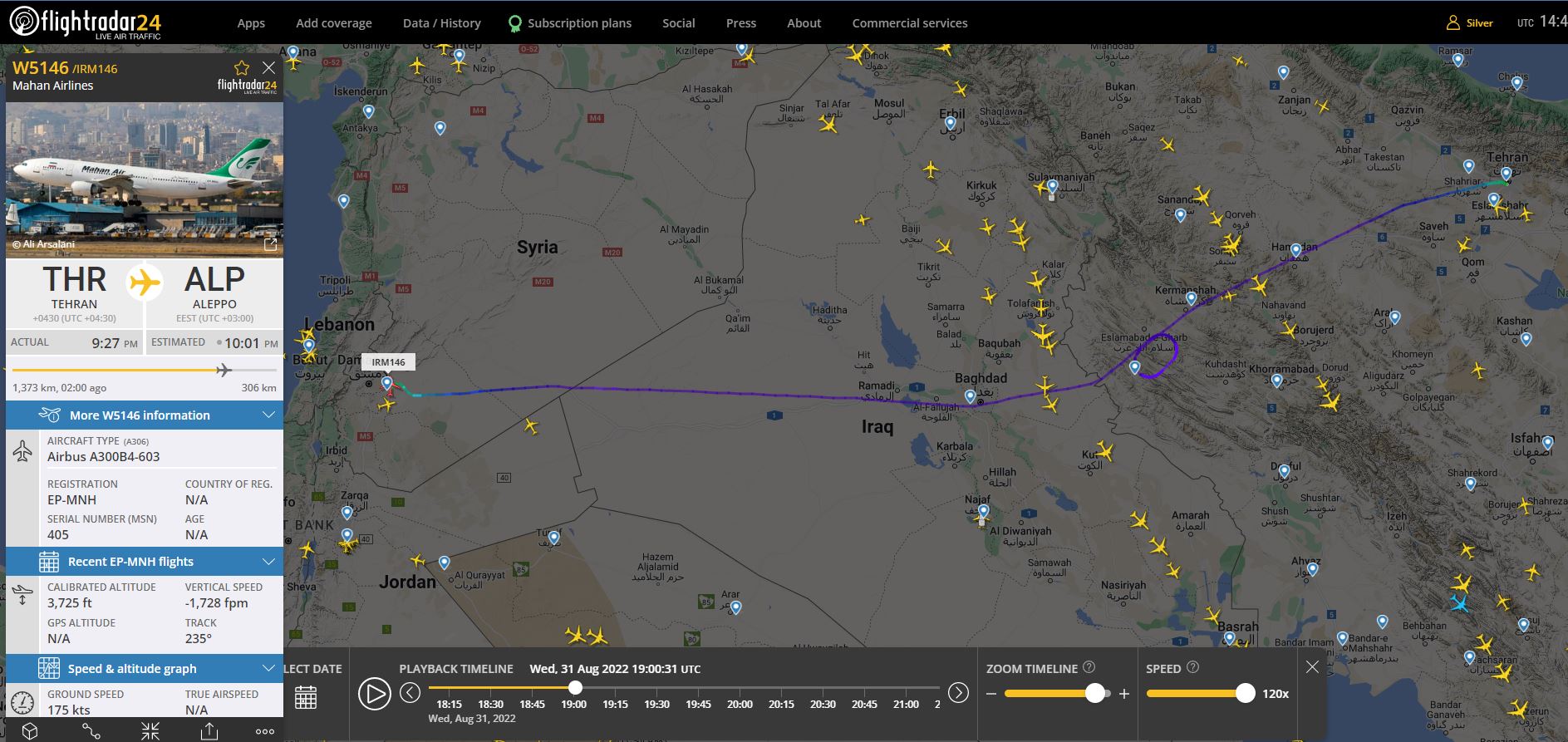Executive Summary
On 6 September, Israeli missile strikes targeted Aleppo International Airport (AIA) for the second time in less than a week. With the majority of Israeli operations striking facilities and weapons storage sites, the repeated targeting of airports signals a shift in targeting patterns.
According to various reports, this shift has been prompted by Iran’s increasing reliance on air transportation to ship supplies to affiliated groups, and at least one recent attack reportedly coincided with the scheduled arrival of aircraft operated by civilian airliners from Iran.
The effects of the airstrikes remain to be seen but the near-term outlook for retaliatory strikes by Iranian-aligned factions remains elevated and includes the potential for continued strikes against coalition assets in eastern Syria. Associated dynamics should therefore be monitored accordingly.
Israeli missile strikes damage airport runway in Aleppo
On 6 September, according to state-linked and other sources, several missiles launched from an area west of Latakia province targeted Aleppo International Airport (AIA) in northwestern Syria at approximately 20:16 local time. The Syrian Ministry of Transportation confirmed the suspension of airport operations and said that all flights were being diverted to Damascus International Airport (DIA) for an unspecified amount of time as a result. State-linked channels citing military sources also said anti-aircraft missile systems responded to the attacks, engaging Israeli missiles without specifying further.
While state-linked sources refrained from discussing casualties, the Syrian Observatory for Human Rights (SOHR) said three people were killed and five others were wounded in the operation which, in addition to the airport runway, also struck surrounding facilities utilized by Iranian-backed militia groups. The report by SOHR added that the airstrikes affected weapon storage sites and other warehouses in the vicinity of the airport, causing large fires and extensive damage. The airport runway was also “severely damaged” as a result.
The strikes on 6 September occurred less than a week after a similar operation targeted AIA on 31 August when at least four missiles impacted near the airport, including the runway. Airport operations were largely unaffected on that occasion, but the 31 August strikes also coincided with assessed coordinated attacks targeting suspected Iran-linked facilities south of Damascus around the same time.
Strikes signal shift in Israeli targeting patterns
The close proximity of the two operations signals a clear escalation in Israeli activities targeting Iranian-backed presence in the country, as well as a shift in targeting practices. As frequently discussed in this report, Israeli airstrikes and long-range missile strikes are reported on a near-weekly basis in Syria, with Talos recording at least 20 separate operations conducted during 2022. The majority of these operations target military facilities and weapons storage sites affiliated with Iranian or Syrian government presence, as part of a long-standing Israeli effort to reduce Iranian entrenchment in the country. To a lesser, but not insignificant, extent strikes have also frequently targeted convoys transiting key routes across Syrian Government controlled areas, including across the Iraq-Syrian border.
By contrast, the recent targeting of airports underscores assessed Israeli intent to target and disrupt air transportation which, according to various sources, is now increasingly being relied upon by Iran to supply affiliated groups based in the country. According to a report published this week by Reuters, citing intelligence sources based in Syria, Tehran has gradually shifted towards using civilian air transportation to ship ammunition and minor military hardware following disruptions to land routes caused by Israeli airstrikes as well as localized issues affecting road transportation. Notably, the same report claims the 31 August strikes were conducted shortly prior to the scheduled arrival of a cargo plane from Tehran, carrying ammunition supplies intended for Syria and Lebanon-based factions. It is plausible that the failure to disrupt airport operations during the initial strikes on 31 August prompted a second, larger operation on 6 September.
Moreover, the latest strikes follow operations conducted against DIA earlier this summer, which subsequent reports likewise claim were intended to disrupt Iranian arms shipments. The strikes on 10 June likewise resulted in extensive damage to the airport runway and the terminal area, resulting in a suspension of airport operations lasting several weeks while repairs were conducted. In response, Iran reportedly began utilizing AIA, setting conditions for a subsequent shift in Israeli targeting patterns.
The airliners allegedly used by Iran to transport supplies to Syria remain unconfirmed amidst understandable secrecy and limited reporting. Following the Damascus airstrikes in June, at least two Iranian carriers, including Caspian Air and Qeshm Fars Air, officially suspended flights to Syria, citing safety concerns, with Mahan Air the only remaining airliner operating flights to Damascus. In 2019, the US imposed sanctions on Mahan Air, which has alleged links to the Islamic Revolutionary Guard Corps, for transporting weapons and personnel to Damascus. As of September, the airline does not officially list Aleppo or Damascus among its international destinations, however open-source flight data confirms Mahan operated a flight between Tehran and Aleppo on the evening of 31 August. According to data provided Flightradar 24, the flight was temporarily put on a holding pattern in eastern Iran, coinciding with the Israeli missile strike, before being diverted to Damascus International Airport. The existence of a similar flight on the evening of 6 September was discussed by some, less credible sources, but was not confirmed by Talos.
Short term outlook for retaliatory attacks elevated
It remains to be seen whether the latest strikes will effectively deter Iran from continuing to ship supplies using air transportation. Alternatively, with flights now diverted away from Aleppo, future airstrikes may plausibly target Damascus International Airport instead should Iran opt to utilize that airport instead. Like previous operations, future missile strikes will most likely target the runway area to avoid civilian casualties, yet the possibility of errant targeting or collateral damage cannot be discounted, and the operations are not without wider risks for Israel.
To recall, the attack in Damascus on 10 June also affected the terminal area, with local reports indicating several civilian injuries resulting. It is worth noting that DIA also serves multiple destinations to the Gulf States, including the UAE and Bahrain, with any future Israeli strikes against the facility, therefore, involving an implicit risk of collateral damage that may be detrimental to Israeli efforts to expand ties with the Gulf states. Any operations will therefore likely be carefully conducted so as to avoid collateral damage or timed to avoid impacting civilian traffic.
In the near term, the potential for Iranian retaliatory strikes also forms a consideration. Iran-linked attacks against the Israeli mainland are unusual but not unprecedented and should therefore not be discounted. More plausible however is the continued targeting of coalition assets, including rocket and UAV strikes, which have been frequently reported in eastern Syria over the previous month. While undeniably linked to wider US-Iranian tensions associated with the Joint Comprehensive Plan of Action (JCPOA), Israeli missile strikes are also assessed as a driver of associated activity. According to local sources, Coalition Forces based in the al-Tanf garrison in eastern Homs and the Koniko Mission Support site in Deir Ez Zour were placed on high alert this week shortly after the missile attack against AIA, with helicopters seen circulating the area in anticipation of possible Iranian-linked retaliatory attacks.
While no significant activity has been observed in the immediate aftermath of the 6 September operation, the potential for indirect fire attacks targeting these locations is assessed to remain elevated over the near term. More broadly, the assessed intensification in Israeli activities and expansion of targeting patterns forms a long-term risk escalation indicator in terms of triggering wider Israeli-Iranian tensions. Related dynamics and the associated impact on coalition presence and US-linked interests in the region are therefore worth monitoring closely.


